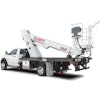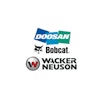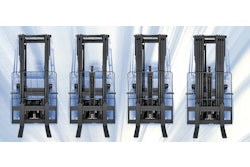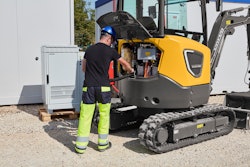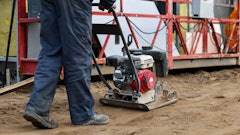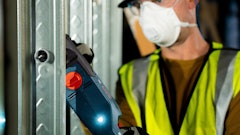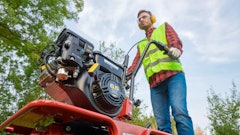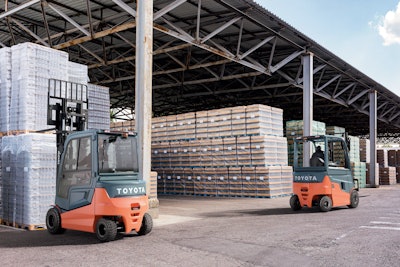
Everything is going electric likely sooner than you might think, especially forklifts for the rental market.
Similar to the trend in the automotive industry of moving from gasoline-powered cars to electric cars, the forklift industry is also in the middle of an electrification transformation that will impact the rental industry.
Although electric counterbalanced forklifts have been around for more than 50 years, they have generally been limited to indoor applications and have not been practical for the wide range of rental applications. Rental forklifts have generally been powered by diesel, liquid petroleum gas or a gasoline engine. However, that is changing rapidly due primarily to three contributing factors: advancements in technology, regulatory changes and zero-emission initiatives.
Technology
The advancements in lithium-ion battery technology and increasing demands for higher energy efficiency in forklifts, coupled with lowering costs, indicate that lithium-ion battery technology will likely be the predominate energy solution in the near future for the forklift industry, replacing traditional lead-acid batteries.
Fast charging is possible with lithium technology where batteries can be recharged from 20 percent to 70 percent state of charge in less than 30 minutes. Lithium-ion batteries have two to three times the lifespan of lead-acid batteries, and they do not require any maintenance. Lithium-ion batteries eliminate the need for battery changing, storage equipment, personnel to maintain/change batteries and other such operational costs required for lead-acid batteries that have made electric forklifts impractical for many rental applications.
High utilization is key in the rental industry, and electric forklifts with lead-acid batteries just can’t achieve utilization requirements. Additionally, lead-acid batteries are generally limited in their ability to provide the high instantaneous power needed to match performance of internal combustion powered forklifts, which has been another limiting factor in the use of electric forklifts in rental applications. However, lithium-ion batteries are capable of delivering more power to forklift’s electric motors, and therefore, the travel and lift speed performance can match that of internal combustion forklifts.
New electric forklifts powered by lithium-ion batteries that are integrated into the design of the forklift are entering the market with similar performance to internal combustion forklifts, while maintaining the same dimensional footprint and load capacities.
Opportunity and fast charging of lithium-ion batteries can be achieved at 220 VAC or 440 VAC, and charger solutions are now available for outdoor applications that require weather protection. For off-grid applications, new stationary backup energy products are emerging that provide quick access for recharging lithium-ion batteries on the job site.
Regulatory Environment
The second major contributing factor to the shift toward electric forklifts is the regulatory environment. A number of states are considering new zero-emission legislation to reduce greenhouse gas emissions, which, if enacted, will further accelerate the shift to electric forklifts for rental applications. California leads the way, and the California Air Resources Board is currently developing regulations that will eliminate the sale of large spark-ignition (LSI) forklifts, up to and including 12,000 pounds beginning in 2026, and restrict the use of existing LSI forklifts for rental applications. This includes LPG and gasoline-powered forklifts.
Additional states are following California’s lead, with New York recently enacting a zero emissions by 2035 initiative. Several other states are working with private utility companies to offer rebates and incentives to encourage the shift to electric forklifts, further accelerating adoption.
Zero-Emission Initiatives
Similarly, zero-emission initiatives are impacting the shift to electric in the material handling industry. Companies of all sizes are all rapidly implementing new sustainability initiatives that are further accelerating the adoption of electric forklifts in the rental industry. They are looking for solutions in their operations that will contribute to these objectives, and electrifying their fleet of forklifts is one solution that can provide an immediate benefit.
Although acquisition costs of electric forklifts with lithium-ion batteries and chargers are higher than internal combustion engine forklifts, annual operating costs are significantly lower, as much as 60 percent lower for energy and 40 percent lower maintenance costs. These annual operating cost reductions help in providing a total cost of ownership that can be used to meet sustainability initiatives.


